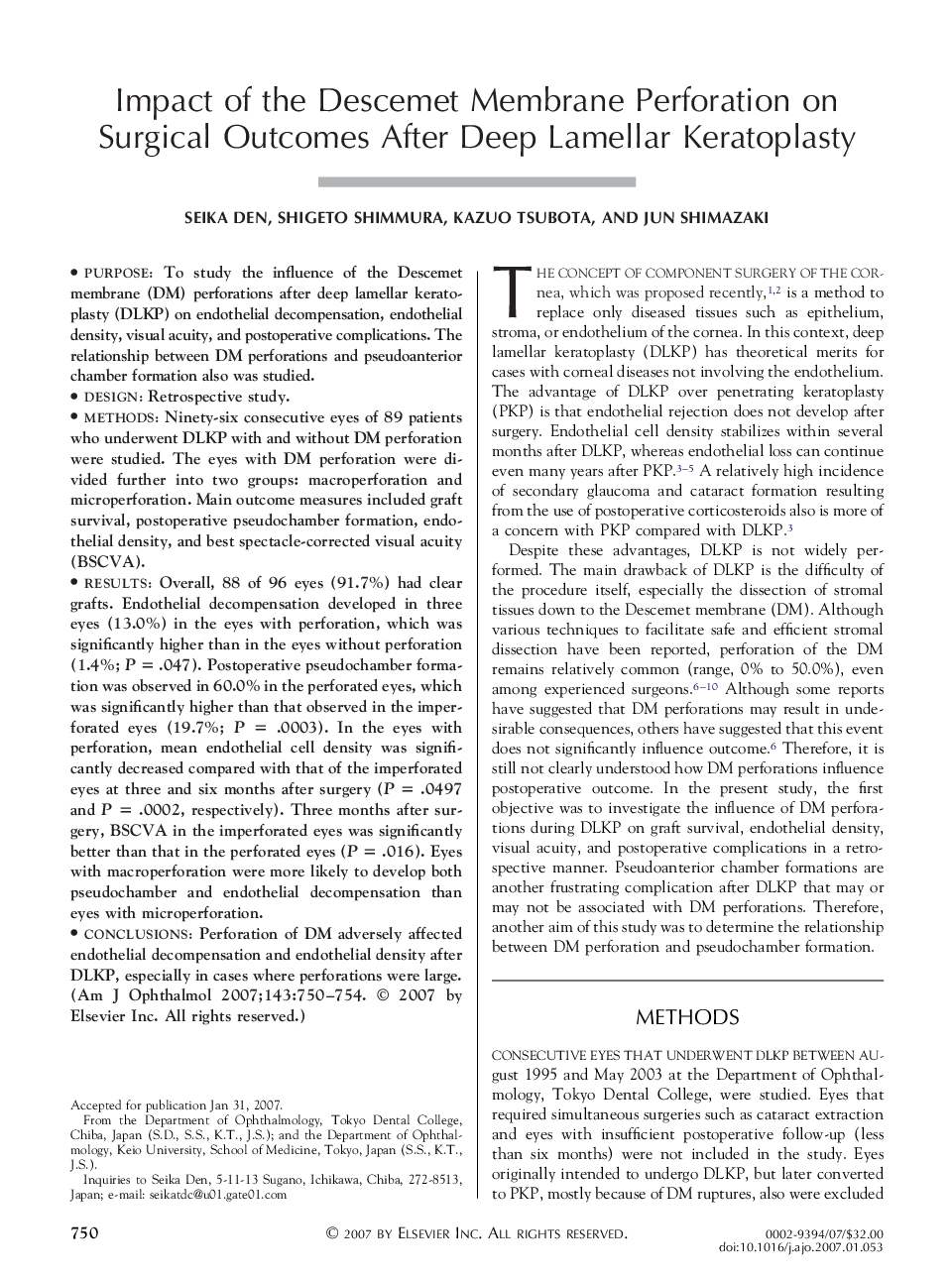| Article ID | Journal | Published Year | Pages | File Type |
|---|---|---|---|---|
| 4006206 | American Journal of Ophthalmology | 2007 | 5 Pages |
PurposeTo study the influence of the Descemet membrane (DM) perforations after deep lamellar keratoplasty (DLKP) on endothelial decompensation, endothelial density, visual acuity, and postoperative complications. The relationship between DM perforations and pseudoanterior chamber formation also was studied.DesignRetrospective study.MethodsNinety-six consecutive eyes of 89 patients who underwent DLKP with and without DM perforation were studied. The eyes with DM perforation were divided further into two groups: macroperforation and microperforation. Main outcome measures included graft survival, postoperative pseudochamber formation, endothelial density, and best spectacle-corrected visual acuity (BSCVA).ResultsOverall, 88 of 96 eyes (91.7%) had clear grafts. Endothelial decompensation developed in three eyes (13.0%) in the eyes with perforation, which was significantly higher than in the eyes without perforation (1.4%; P = .047). Postoperative pseudochamber formation was observed in 60.0% in the perforated eyes, which was significantly higher than that observed in the imperforated eyes (19.7%; P = .0003). In the eyes with perforation, mean endothelial cell density was significantly decreased compared with that of the imperforated eyes at three and six months after surgery (P = .0497 and P = .0002, respectively). Three months after surgery, BSCVA in the imperforated eyes was significantly better than that in the perforated eyes (P = .016). Eyes with macroperforation were more likely to develop both pseudochamber and endothelial decompensation than eyes with microperforation.ConclusionsPerforation of DM adversely affected endothelial decompensation and endothelial density after DLKP, especially in cases where perforations were large.
